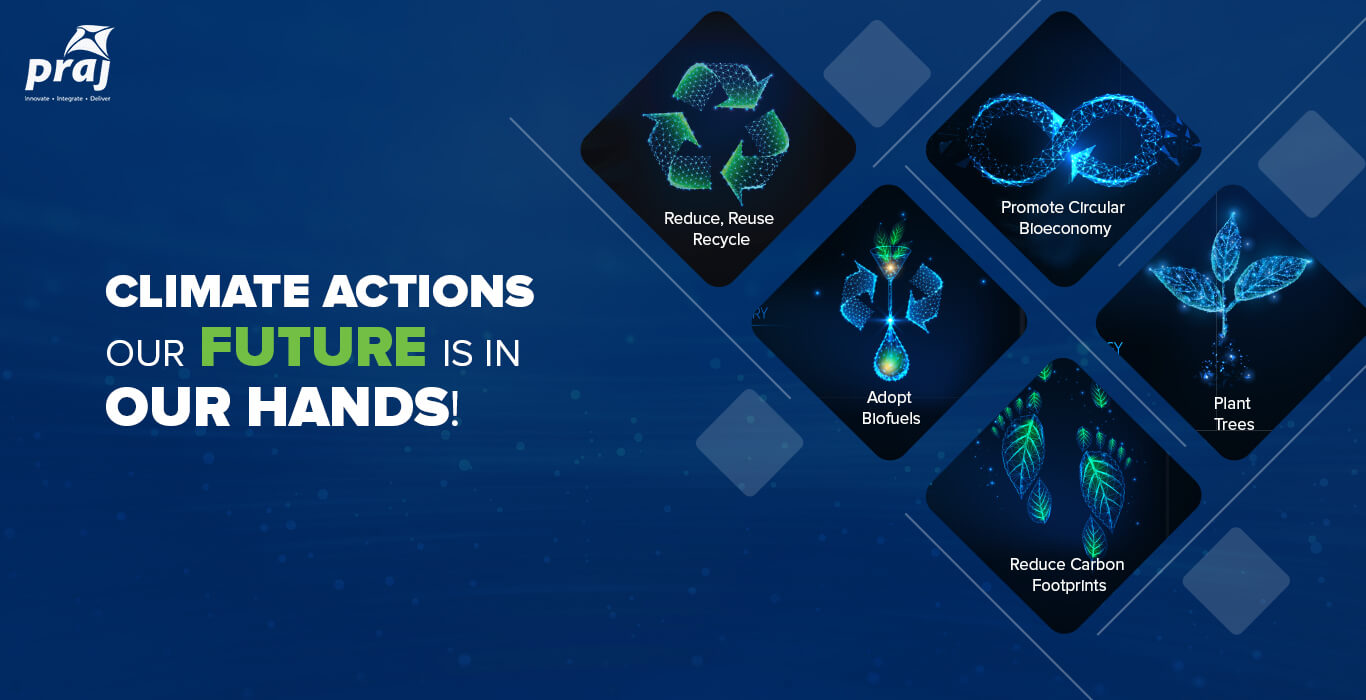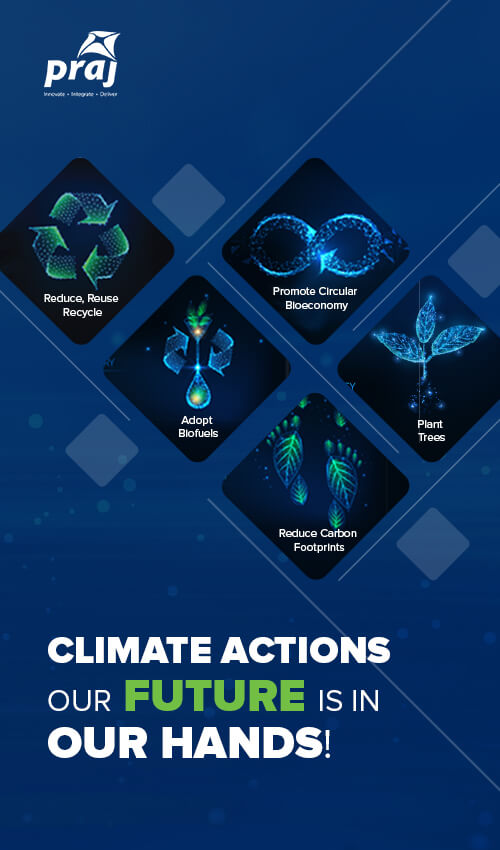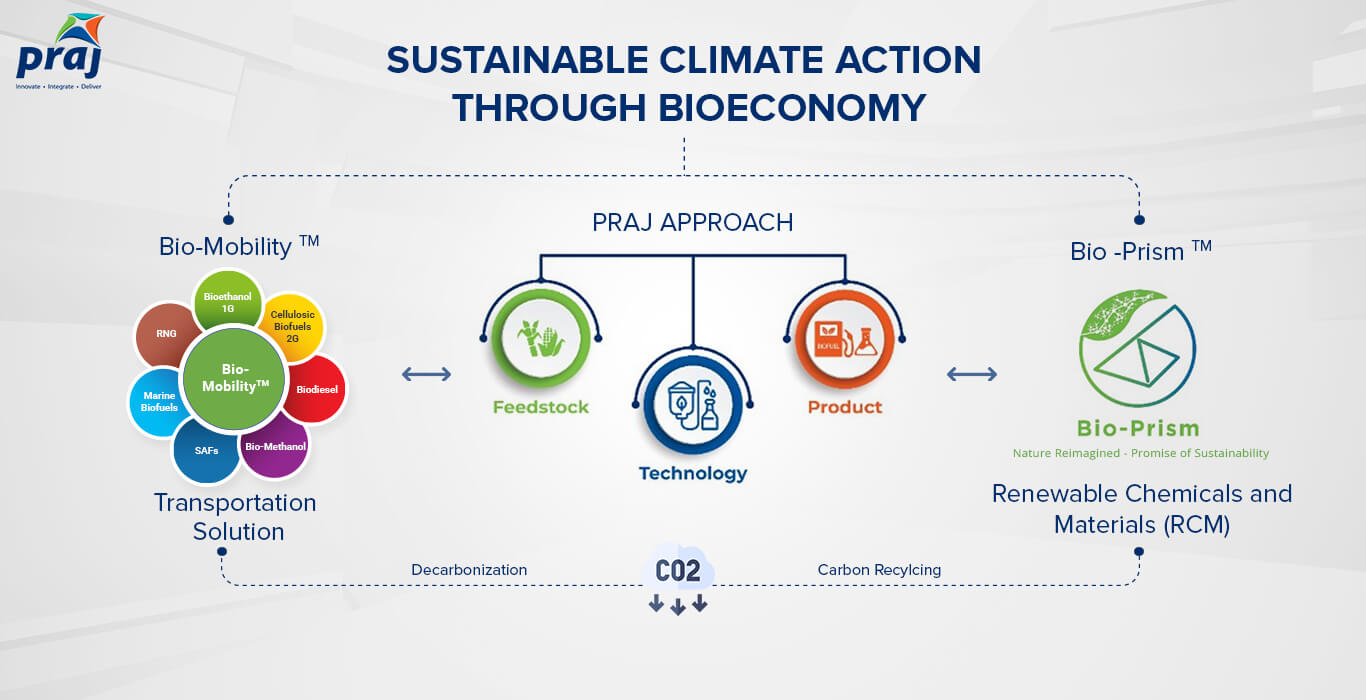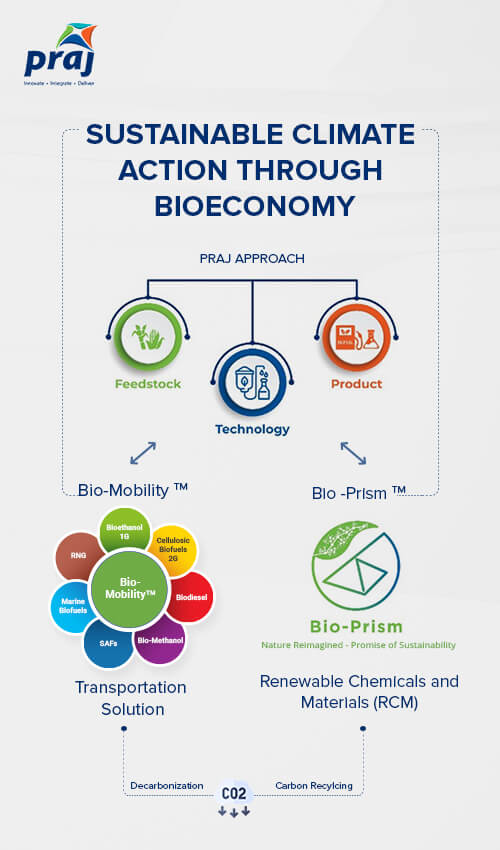Compressed Bio Gas (CBG)
PRAJ RenGas® Technology
Partnering for Better Tomorrow with Compressed Biogas (CBG) The Next Generation Biofuel
-
 RNG: Biomethane produced by anaerobic digestion of Agri-residues/organic wastes
RNG: Biomethane produced by anaerobic digestion of Agri-residues/organic wastes -
 Reduces GHG & Carbon Emissions
Reduces GHG & Carbon Emissions -
 Agro-based- Improves internal economies
Agro-based- Improves internal economies -
 Lower costs than Fossil fuels
Lower costs than Fossil fuels
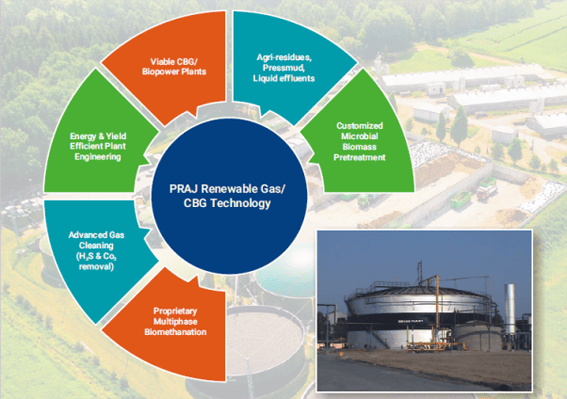
PRAJ – Leading the way in Renewable Gas:
As global leader in Biofuels Technology & Plants, PRAJ has a strong track record in Renewable Gas Plants. Over 40 Industrial Installations with capacities up to 1500 M3/Hr
PRAJ  ® Technology results from extensive research & development on
® Technology results from extensive research & development on
-
Compositional data of Agro-residues
-
Unique Microbial Consortia for Feedstock Pretreatment & Anaerobic digestion
-
Industrial Biomethane Fermentation Process Development
-
Digestate processing into Value added Soil Conditioner co-products
-
Advanced cost effective biogas cleaning techniques to give Pure Methane
PRAJ Multi-feed Multi-products  ® Plants
® Plants
- Agri-Residues: Rice/Wheat/Corn straws, Cane bagasse/Beet pulp
- Sugar Processing co-products Like Pressmud /Spentwash (Vinnase)
- Composite or Mixed Industrial waste streams
- Efficiently engineered Advanced Process plants
- Continuous Microbial Feedstock treatment / stabilization
- High yield Multi-phase Anaerobic digestion with selected Microbial consortium
- Cost effective advanced Gas purification
- CBG for Transport and Grid Applications
- Combined Heat and Biopower (CHP) Applications
- Value adding Organic soil conditioner co-products
PRAJ has developed “3 Key unique Technologies” for high gas yields & purity in Renewable Gas plants
- Feedstock Pretreatment for Preservations & High Yields
-
- Proprietary Microbial Consortium development
- Hydrolysis & Preservation of TVS in convertible form
- High Efficiency & Fast Biomethane Production
-
- Proprietary Rumen Microbe consortium development
- High Blogas & Methane Yields with CO2, reduction
- Biogas cleaning to CBG
-
- Efficient Low cost Chemical HS Removal
- Efficient water based CO2 Removal
- Cleaning and drying through the Molsieve Technique







